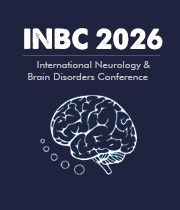Neural Network
A neural network, also known as a connectionist system, is a series of interconnected neurons forming a network through which computational signals can pass. The network is composed of basic components called “neurons,” which receive, combine, and transmit information. By making use of weights and thresholds, the neurons react differently depending on the strength of the input signals. Depending on the structure of the network, the signals can cause certain neurons to fire or not, producing a particular output. This allows the network to process data and build a complex representation from simple inputs. Neural networks are becoming increasingly popular as machine learning and artificial intelligence systems become more widely used. They are a form of algorithmic machine learning in which computing systems use “neurons,” or as the name implies, “neural networks” to make predictions. They are designed to work and learn as a network of connected nodes, like that of a human brain. Nodes can be anything form atoms to neurons; however in this instance, they are usually composed of modules. Neural networks are able to learn the underlying patterns in large amounts of data by adjusting the weights associated with the nodes. This is done in an iterative manner, with each iteration seeking to improve the accuracy of the model. As the number of iterations increases, so too will the model’s accuracy, as it has learned more patterns in the data. For this reason, neural networks are commonly referred to as ‘deep learning’ systems, further emphasizing their ability to learn through trial and error. Applications of neural networks are broad, and span various industries. Examples of applications include facial recognition and fraud detection, image recognition, natural language processing, medical diagnostics, and autonomous vehicle operation. With the technology continuing to evolve, neural networks will increasingly become integral components of algorithmic machine learning systems in data science.

Joe Sam Robinson
Mercer University, United States
Robert B Slocum
University of Kentucky HealthCare, United States
George Diaz
Memorial Healthcare Systems, United States
Daniel Curry
Texas Children’s Hospital, United States
Zhenhuan Liu
Guangzhou University Chinese Medicine, China
Kiran Ghotra
Lake Erie College of Osteopathic Medicine, United States




Title : Atypical presentation of Juvenile myoclonic epilepsy in a 16-year-old female: A Case Report
George Diaz, Memorial Healthcare Systems, United States
Title : What we don’t know about hydrocephalus and It’s management
Daniel Curry, Texas Children’s Hospital, United States
Title : Artificial intelligence-driven DWI and FLAIR for the detection of early stroke changes: A systematic review
Shari L Guerra, The Medical City, Philippines
Title : Mapping neuroplasticity in occupational therapy: Evidence-based interventions with measurable neural outcomes
Jessica Marchant, Texas Woman's University, United States
Title : Non-pharmacologic management of orthostatic hypotension in inpatient rehabilitation: A quality improvement initiative
Laura Steakin, Rehabilitation Institute at Sinai, United States
Title : Non-pharmacologic management of orthostatic hypotension in inpatient rehabilitation: A quality improvement initiative
Mackenzie Weber, Rehabilitation Institute at Sinai, United States